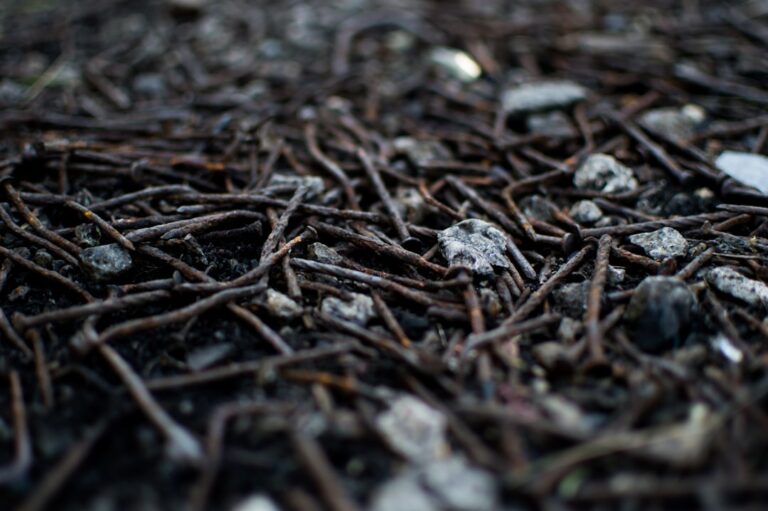Removing Ink Stains: A Step-by-Step Guide

Ink stains are a common problem that can occur on various surfaces, including fabric. There are two primary categories of ink stains: water-based and permanent. Water-based ink stains are typically found in fountain pens, gel pens, and washable markers, while permanent ink stains are commonly associated with ballpoint pens, permanent markers, and certain types of printer ink.
Water-based ink stains are generally easier to remove due to their washable nature. These stains can often be treated using common household products like dish soap or laundry detergent. In contrast, permanent ink stains are more challenging to eliminate and usually require more aggressive cleaning solutions and techniques.
The type of fabric affected by the ink stain is an important consideration when choosing a cleaning method. Some fabrics may be more delicate and require gentler treatment to avoid damage. Identifying the type of ink stain and the fabric involved is crucial for selecting the most appropriate and effective cleaning approach.
By understanding the differences between water-based and permanent ink stains, as well as considering the fabric type, individuals can better address ink stains and increase their chances of successful removal.
Key Takeaways
- Different types of ink stains require different treatment methods, such as water-based, permanent, or gel ink.
- Pre-treating the stain with rubbing alcohol or hairspray can help break down the ink before cleaning.
- Choose the right cleaning solution based on the fabric and type of ink stain, such as dish soap for water-based ink or acetone for permanent ink.
- Apply the cleaning solution to the stained area and let it sit for a few minutes to penetrate the fabric.
- Gently scrub the stain with a soft-bristled brush and blot with a clean cloth to lift the ink from the fabric.
Pre-Treating the Stain
Blotting the Stain
The first step in pre-treating an ink stain is to blot the stain with a clean cloth or paper towel to remove as much of the excess ink as possible. Be careful not to rub the stain, as this can cause the ink to spread and penetrate deeper into the fabric.
Applying a Pre-Treatment Solution
Once you’ve blotted the stain, it’s time to apply a pre-treatment solution. The type of solution you use will depend on the type of ink stain you’re dealing with. For water-based ink stains, a simple solution of water and mild detergent can be used. For permanent ink stains, a stronger pre-treatment solution such as rubbing alcohol or acetone may be necessary to break down the ink.
Allowing the Solution to Penetrate
After applying the pre-treatment solution, allow it to sit on the stain for a few minutes to penetrate the fabric and loosen the ink. This will make it easier to remove the stain during the cleaning process. Remember to test the pre-treatment solution on a small, inconspicuous area of the fabric first to ensure that it doesn’t cause any damage or discoloration.
By pre-treating the ink stain before applying a cleaning solution, you can increase the chances of successfully removing the stain from the fabric.
Choosing the Right Cleaning Solution

Choosing the right cleaning solution is crucial in effectively removing ink stains from fabric. The type of cleaning solution you use will depend on the type of ink stain and the fabric you’re dealing with. For water-based ink stains on washable fabrics, a simple solution of water and mild detergent may be sufficient to remove the stain.
For more stubborn water-based ink stains, a pre-treatment solution of water and ammonia can be effective in breaking down the ink. When dealing with permanent ink stains, stronger cleaning solutions may be necessary. Rubbing alcohol or acetone are commonly used to remove permanent ink stains from fabric.
These solutions work by breaking down the ink and making it easier to lift from the fabric. It’s important to use these solutions with caution, as they can be harsh on certain fabrics and may cause damage or discoloration. Always test the cleaning solution on a small, inconspicuous area of the fabric before applying it to the stain.
In some cases, commercial stain removers specifically designed for ink stains may be used. These products are formulated to effectively break down ink and are safe for use on a variety of fabrics. When choosing a cleaning solution for an ink stain, it’s important to consider both the type of ink and the fabric to ensure that you’re using a solution that is safe and effective for your specific situation.
Applying the Cleaning Solution
| Task | Time Taken (minutes) | Amount of Solution Used (ml) |
|---|---|---|
| Preparation | 5 | 50 |
| Application | 10 | 100 |
| Rinsing | 5 | 50 |
Once you’ve chosen the appropriate cleaning solution for the ink stain, it’s time to apply it to the fabric. For water-based ink stains, gently dab the cleaning solution onto the stain using a clean cloth or sponge. Avoid rubbing the stain, as this can cause the ink to spread and penetrate deeper into the fabric.
Allow the cleaning solution to sit on the stain for a few minutes to penetrate the fabric and break down the ink. When dealing with permanent ink stains, apply the cleaning solution directly to the stain and gently blot it with a clean cloth or sponge. Again, avoid rubbing the stain, as this can cause further damage to the fabric.
Allow the cleaning solution to sit on the stain for a few minutes to effectively break down the ink. It’s important to work from the outside of the stain towards the center to prevent spreading the ink further into the fabric. By applying the cleaning solution carefully and allowing it time to work on the stain, you can increase your chances of successfully removing the ink from the fabric.
Gentle Scrubbing and Blotting
After applying the cleaning solution to the ink stain, gentle scrubbing and blotting can help lift the ink from the fabric. For water-based ink stains, gently scrub the stain with a soft-bristled brush or sponge to help loosen and lift the ink from the fabric. Avoid using excessive force, as this can cause damage to delicate fabrics.
For permanent ink stains, gentle blotting with a clean cloth or sponge can help lift the ink from the fabric. Avoid rubbing or scrubbing too vigorously, as this can cause further damage to the fabric. Continue blotting until you’ve removed as much of the ink as possible.
It’s important to use clean cloths or sponges throughout this process to prevent spreading the ink further into the fabric. If necessary, apply more cleaning solution and continue gentle scrubbing and blotting until you’ve lifted as much of the ink stain as possible.
Laundering or Rinsing the Fabric

Removing Residual Ink and Cleaning Solution
Once you’ve treated and removed as much of the ink stain as possible, it’s time to launder or rinse the fabric to remove any remaining traces of ink and cleaning solution.
Laundering Washable Fabrics
For washable fabrics, laundering is typically sufficient to remove any residual ink and cleaning solution. Use a mild detergent and wash the fabric according to its care instructions.
Rinsing Delicate Fabrics
For delicate fabrics that cannot be laundered, rinsing with water may be necessary to remove any remaining traces of ink and cleaning solution. Fill a basin with cool water and gently agitate the fabric to help rinse away any remaining residue.
Inspecting and Repeating the Cleaning Process
After laundering or rinsing, inspect the fabric for any residual stains. If any traces of ink remain, repeat the cleaning process until you’ve successfully removed all traces of the stain.
Checking for Residual Stains and Repeating the Process
After laundering or rinsing, it’s important to check for any residual stains that may still be present on the fabric. If any traces of ink remain, repeat the cleaning process from pre-treating the stain through gentle scrubbing and blotting until you’ve successfully removed all traces of the stain. It’s important to be patient and persistent when dealing with stubborn ink stains, as they may require multiple treatments to completely remove them from fabric.
Always test any cleaning solutions on a small, inconspicuous area of the fabric before applying them to the stain, and use caution when using stronger cleaning solutions such as rubbing alcohol or acetone. By carefully following these steps and being diligent in your approach, you can effectively remove even stubborn ink stains from fabric and restore your clothing and linens to their original condition. Remember that prevention is always better than cure when it comes to stains; always handle pens and other writing instruments with care around fabrics to avoid accidental spills and stains.
If you’re struggling to remove ink stains, you might want to check out this article on using coffee for weight loss. It’s always interesting to discover new and unconventional uses for everyday items, and this article might just have a tip or two that could help you tackle those stubborn ink stains.
FAQs
What are some common methods for removing ink stains?
Some common methods for removing ink stains include using rubbing alcohol, hairspray, milk, vinegar, or commercial stain removers.
How can rubbing alcohol be used to remove ink stains?
Rubbing alcohol can be used to remove ink stains by applying it directly to the stained area and then blotting with a clean cloth. Repeat this process until the stain is removed.
Can hairspray be used to remove ink stains?
Yes, hairspray can be used to remove ink stains by spraying it directly onto the stained area and then blotting with a clean cloth. Repeat this process until the stain is removed.
Is it possible to remove ink stains with milk?
Yes, milk can be used to remove ink stains by soaking the stained fabric in milk for a few hours, then rinsing and laundering as usual.
How can vinegar be used to remove ink stains?
Vinegar can be used to remove ink stains by soaking the stained fabric in a mixture of vinegar and water, then laundering as usual.
Are there any commercial stain removers that are effective for removing ink stains?
Yes, there are commercial stain removers specifically designed to remove ink stains. Follow the instructions on the product label for best results.






